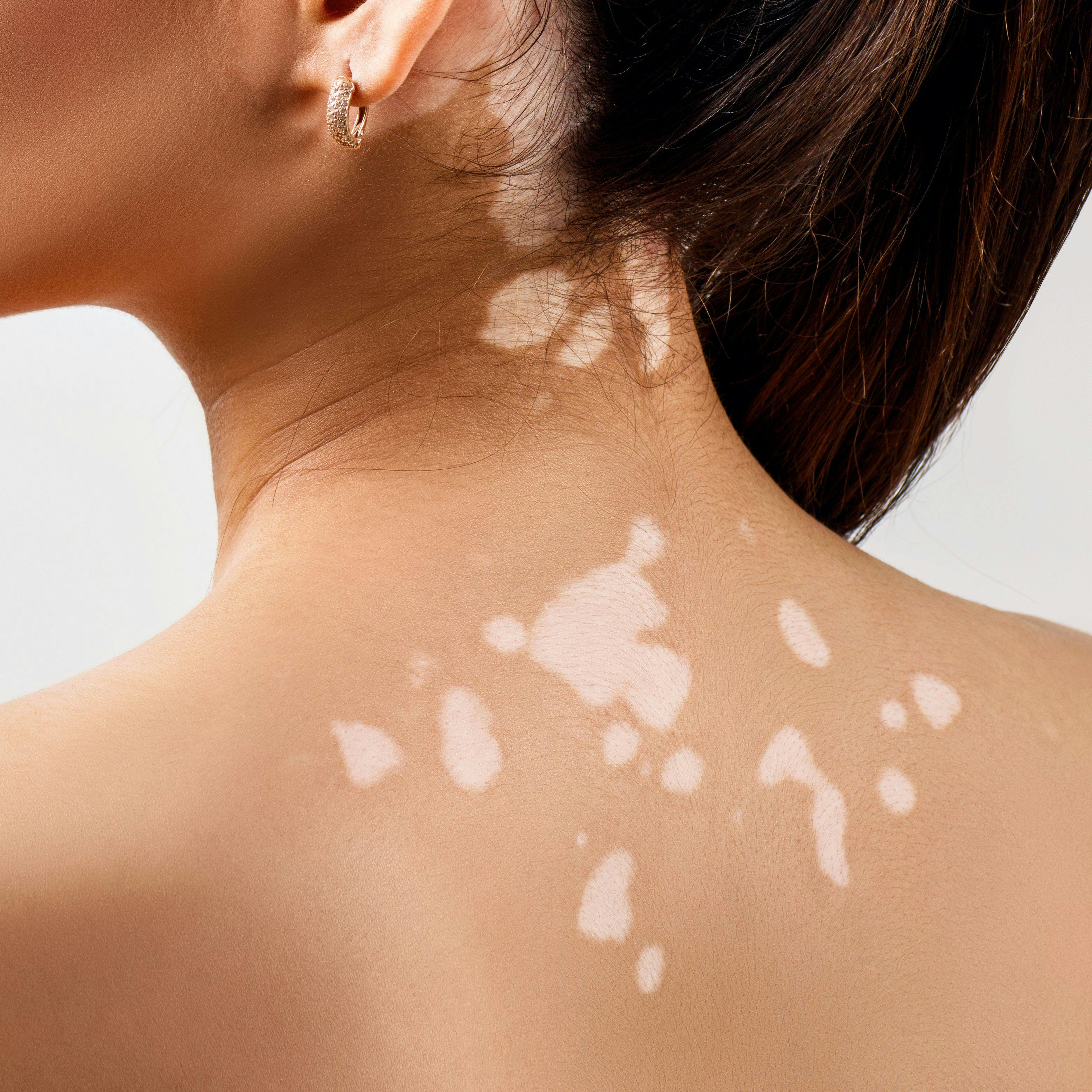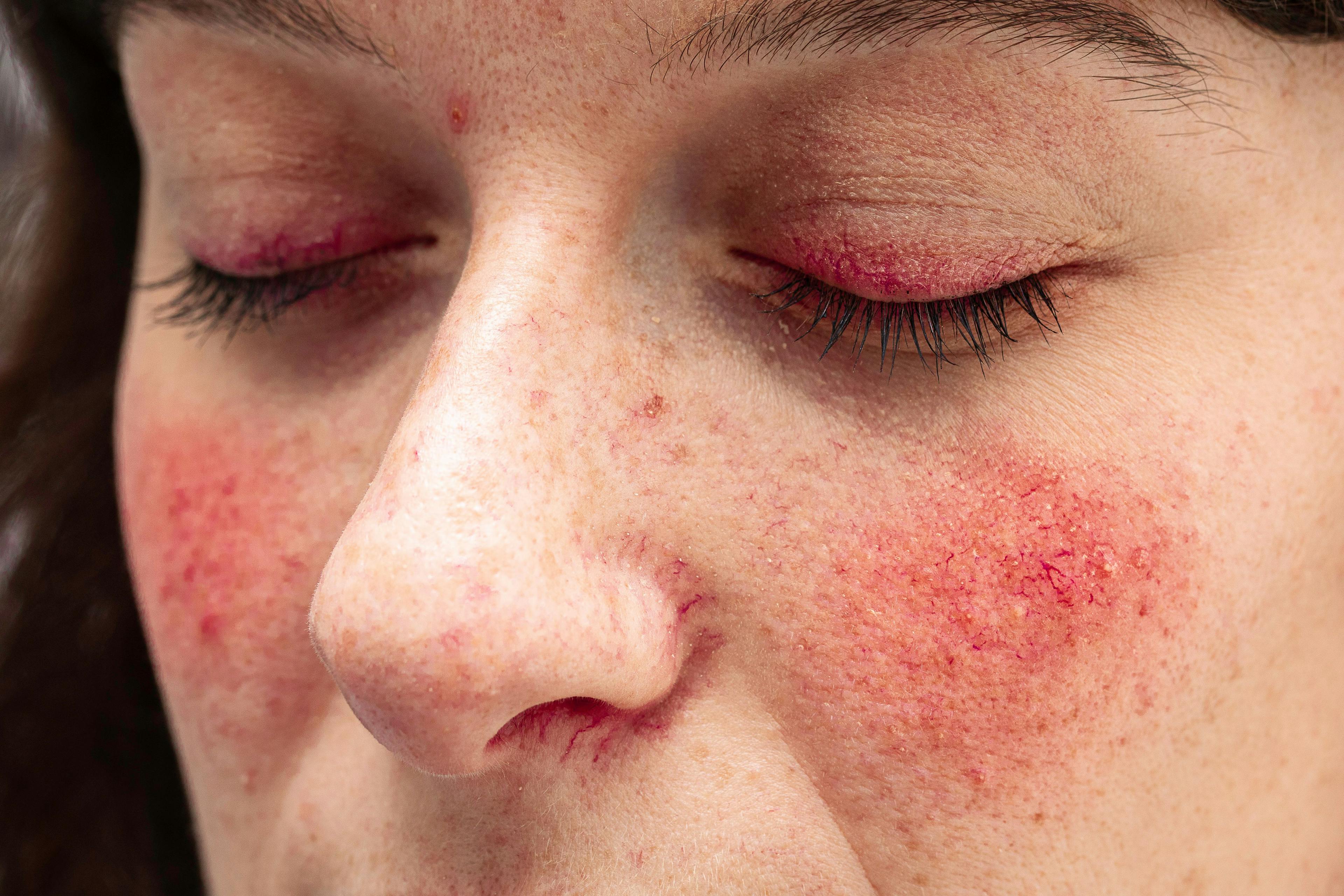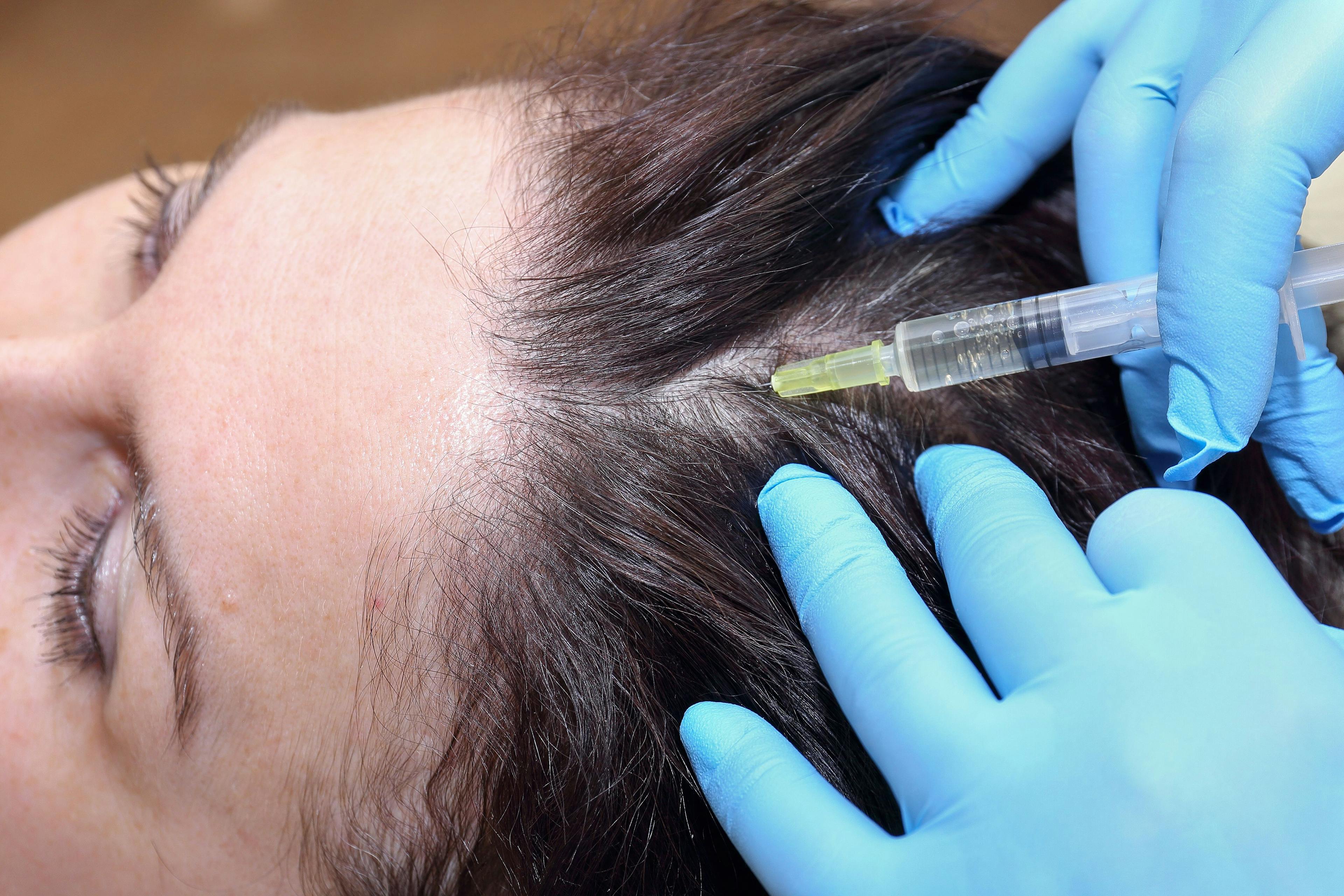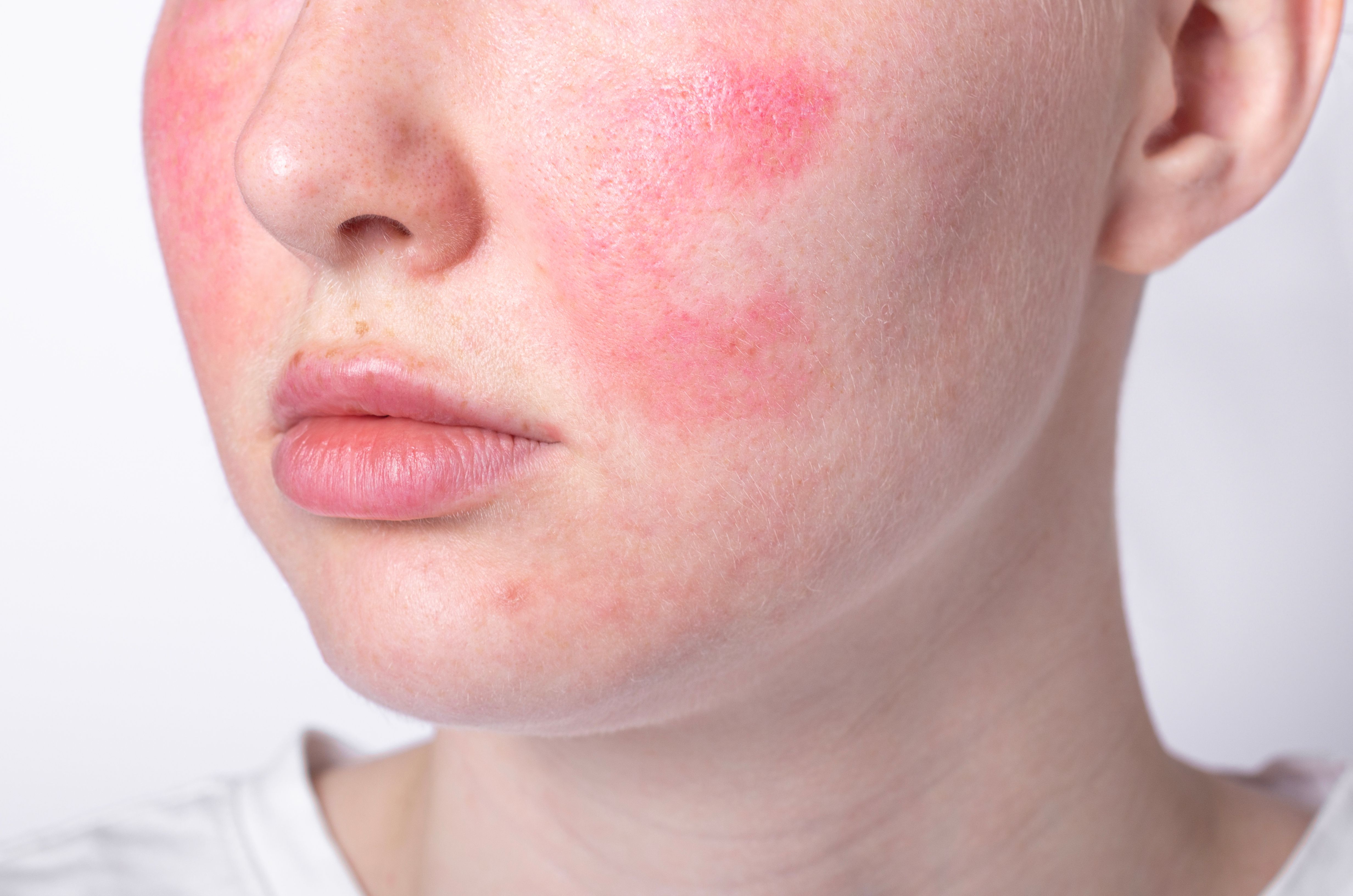- Acne
- Actinic Keratosis
- Aesthetics
- Alopecia
- Atopic Dermatitis
- Buy-and-Bill
- COVID-19
- Case-Based Roundtable
- Chronic Hand Eczema
- Chronic Spontaneous Urticaria
- Drug Watch
- Eczema
- General Dermatology
- Hidradenitis Suppurativa
- Melasma
- NP and PA
- Pediatric Dermatology
- Pigmentary Disorders
- Practice Management
- Precision Medicine and Biologics
- Prurigo Nodularis
- Psoriasis
- Psoriatic Arthritis
- Rare Disease
- Rosacea
- Skin Cancer
- Vitiligo
- Wound Care
Publication
Article
Dermatology Times
Study Invites Second Look at Carvedilol
Author(s):
In vitro and in vivo research sheds light on medication’s mechanism of action.
Rosacea treatment has a broad armamentarium which include dicarboxylic acids, antibiotics, keratolytic agents, vasoconstrictors, and α1-adrenergic agonists.1 Despite this robust therapeutic landscape, other types of topical medications are being studied for rosacea. For example, carvedilol, traditionally used as a ꞵ-blocker, is becoming recognized as a treatment for flushing and persistent erythema in rosacea.2 New research sheds light on its mechanism of action.
The pathophysiology of rosacea continues to be actively investigated. It is known that different kinds of external stimulation, including UV radiation and bacteria, directly or indirectly increase the activity of kallikrein-related peptidase 5 (KLK5) in the stratum corneum via toll-like receptor 2 (TLR2), which cleaves the inactive precursor human cationic antimicrobial protein to form the active LL-37 fragment.3 The TLR2/KLK5 pathway is also key in the pathophysiology for rosacea, as serine protease KLK5 activity and cathelicidin expression are upregulated, leading to cutaneous inflammation.3 As a result, some rosacea medications inhibit KLK5 and cathelicidin expression.4 However, the efficacy of carvedilol as a treatment for TLR2, KLK5, or cathelicidin pathway has yet to be determined.
A recent original study in Frontiers in Immunology conducted by Zhang et al investigated the molecular mechanisms underlying carvedilol efficacy in rosacea treatment.5 The authors subjected skin samples of patients with rosacea to both histopathologic and immunohistochemical (CD68, toll-like receptor 2 [TLR2], KLK5, cathelicidin, tumor necros factor–α, and IL-1ꞵ) evaluation.
Furthermore, an in vivo murine rosacea-like inflammation model was created by LL-37 intradermal injection with or without carvedilol pretreatment. Erythema proportion and skin redness were measured, and murine skin samples underwent pathological examination for inflammatory status. Murine skin and LPS-stimulated RAW 264.7 cells with or without carvedilol pretreatment were evaluated by quantitative reverse transcription–polymerase chain reaction and Western blotting. Clinical facial images of patients were obtained using the VISIA skin analysis system before, as well as 4 and 6 months after, oral carvedilol administration. Severity of rosacea was assessed by 2 blinded dermatologists according to the Investigator Global Assessment (IGA) score using a 5-point scale.
The authors reported that rosacea skin lesions exhibited more inflammatory cell infiltration than surrounding areas, with macrophage infiltration and inflammatory cytokines (TLR2, KLK5cathelicidin, TNF-α, and IL-1ꞵ). In vivo, carvedilol alleviated inflammation in LL-37 mice, downregulating TLR2, KLK5, and cathelicidin expression. In the LL-37 plus carvedilol group, the color and range of erythema decreased, and the whole skin was nearly consistent with the peripheral skin. In vitro, carvedilol decreased TLR2 expression in RAW 264.7 cells, further reducing KLK5 secretion and LL-37 expression, which ultimately inhibited rosacealike inflammation. Compared with the lipopolysaccharide (LPS) group, TLR2, KLK5, and cathelicidin expression in carvedilol plus LPS RAW 264.7 cells was relatively reduced, and the immunofluorescence staining results mirrored these findings. Clinical manifestations and facial redness clearly improved during 6-month follow-up with systemic carvedilol administration by showing a statistical difference in erythema index as determined using Image J, a simple, rapid, objective and reproducible tool to monitor erythema in rosacea patients during treatment.
“The observation that carvedilol inhibits the expression of TLR2, KLK5, and cathelicidin and inflammatory factors in a mouse model of rosacealike dermatitis may give way to reducing exposure to doxycycline for attempting to counter the inflammatory pathways involved,” said Neal Bhatia, MD, director of clinical dermatology at Therapeutics Clinical Research in San Diego, California.
The mechanism of action of ꞵ-blockers such as carvedilol in treating rosacea symptoms is hypothesized to be through the blockade of ꞵ2-adrenergic receptor on the smooth muscle of cutaneous arterial blood vessels, which causes vasoconstriction.6 Carvedilol was initially reported for refractory facial flushing and persistent erythema of rosacea in 2011. The patient responded to carvedilol despite failing 4 weeks of treatment with doxycycline, fexofenadine, dexamethasone, aspirin, clonidine, topical hydrocortisone, and topical pimecrolimus (Elidel, Ortho Dermatologics).7 Since this publication and others like it, several guidelines and consensus panels have recommended this therapy for erythematotelangiectatic phenotypes of rosacea.2,8 The clinical observations confirmed these results with 6.25 mg twice daily of carvedilol during a 6-month course, which resulted in improved erythema as determined by VISIA, colorimetry, and clinician IGA score. “Confirmation of 6 months of reduction of flushing, erythema, and overall symptom complex as observed in the photos, as well as patient testimonials, would open this class of therapies up to dermatologists, especially for patients with more vasomotor involvement or triggers of flares,” Bhatia said.
The results demonstrated that carvedilol reduced TLR2-induced inflammation in macrophages both in vivo and in vitro. However, a key limitation of this study was that no pathological evidence was available regarding an association between the TLR2/KLK5/cathelicidin changes in macrophages and clinical improvement in patients with rosacea because the participants refused to have skin biopsies taken. This is not surprising—it is often difficult to get consent for facial skin biopsies, given the risk of scarring and dyspigmentation.
This is one of the first studies to elucidate the specific effects of carvedilol in rosacea’s inflammatory pathophysiology. The authors conclude that carvedilol is effective in the treatment of rosacea by inhibiting macrophage TLR2 expression. Further studies are needed to better clarify the intrinsic mechanism between inflammatory status, adrenergic receptors, and TLRs in rosacea. However, these findings represent a novel anti-inflammatory mechanism in the armamentarium against rosacea. Bhatia concluded that “although the study was small, with only 4 patients treated and followed, this approach to control the macrophage-driven inflammation, as well as the TLR2/cathelicidin axis and neutrophils, shows that there could be a very thorough coverage of the major contributing factors of inflammation in rosacea.”
Disclosures:
Bhatia is affiliated with AbbVie, Almirall, Arcutis Biotherapeutics, Arena Pharmaceuticals, Biofrontera, Boehringer Ingelheim, Brickell Biotech, Bristol Myers Squibb, Dermavant Sciences, Eli Lilly and Company, EPI Health, Ferndale Pharma Group, Galderma, Genentech, Incyte, ISDIN, Johnson & Johnson, La Roche-Posay, LEO Pharma, Mayne Pharma, Novartis, Ortho Dermatologics, Pfizer, Procter & Gamble, Regeneron Pharmaceuticals, Sanofi, Stemline, Sun Pharma, Verrica Pharmaceuticals, and VYNE Therapeutics.
References:
1. Dall’Oglio F, Nasca MR, Micali G. Emerging topical drugs for the treatment of rosacea. Expert Opin Emerg Drugs. 2021;26(1):27-38. doi:10.1080/14728214.2021.1887138
2. van Zuuren EJ. Rosacea. N Engl J Med. 2017;377(18):1754-1764. doi:10.1056/NEJMcp1506630
3. Yamasaki K, Di Nardo A, Bardan A, et al. Increased serine protease activity and cathelicidin promotes skin inflammation in rosacea. Nat Med. 2007;13(8):975-980. doi:10.1038/nm1616
4. Cathelicidin, kallikrein 5, and serine protease activity is inhibited during treatment of rosacea with azelaic acid 15% gel. J Am Acad Dermatol. Accessed April 1, 2022. doi:10.1016/j.jaad.2013.05.019
5. Zhang J, Jiang P, Sheng L, et al. A novel mechanism of carvedilol efficacy for rosacea treatment: toll-like receptor 2 inhibition in macrophages. Front Immunol. 2021;12:609615. doi:10.3389/fimmu.2021.609615
6. Lehmann P. [Rosacea. Clinical features, pathogenesis and therapy]. Hautarzt. 2005;56(9):871-885; quiz 886-887. doi:10.1007/s00105-005-1009-3
7. Hsu CC, Lee JY. Carvedilol for the treatment of refractory facial flushing and persistent erythema of rosacea. Arch Dermatol. 2011;147(11):1258-1260. doi:10.1001/archdermatol.2011.204
8. Layton A, Thiboutot D. Emerging therapies in rosacea. J Am Acad Dermatol. 2013;69(6, suppl 1):S57-S65. doi:10.1016/j.jaad.2013.04.041
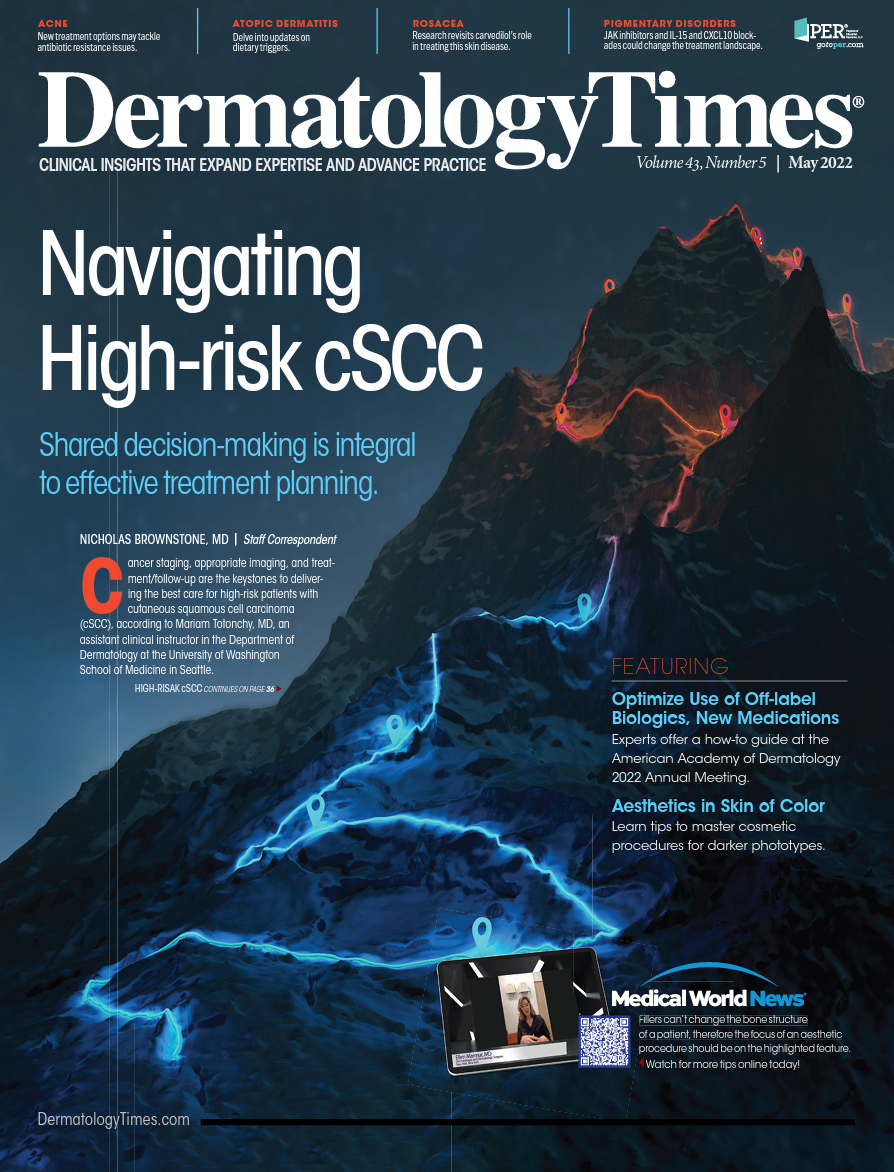
Newsletter
Like what you’re reading? Subscribe to Dermatology Times for weekly updates on therapies, innovations, and real-world practice tips.

